Soy sauce originates from China and is made from fermented soybeans, brine and roasted grains. It is used for many Chinese and Asian dishes including many types of stir fry, can be used as a dipping dish, is added to rice and can be used among many other types of meals.
Though the taste of soy sauce is unique and may be unusual compared to many western flavours, it typically starts with a salty taste. Some soy sauce has a sweet and/or bitter aftertaste too which can work well alongside noodles and dumplings.
In this article, we will be listing some of the best soy sauce that are available today so you can experiment with new flavours and enjoy authentic Asian cuisines from the comfort of your own home.Best Pick

The best pick is the Kishibori Shoyu Pure Artisan Soy Sauce. It is unadulterated and has no preservatives in it, offering an authentic soy sauce taste without leaving you to worry about your health.
Though not gluten-free, it comes in beautiful packaging and is made with high-quality wheat and soybeans for the best quality soy sauce.
Budget Pick

The best budget is the ABC Kecap Manis. As an alternative to the more salty soy sauce, the ABC Kecap Manis soy sauce is sweet and is a favourite for Indonesian foods. It's not limited to such foods, however, and can be used for a wide variety of foods.
As it is on the thicker end, this soy sauce makes for a great budget-friendly option for dipping your food into.
Best Sellers in Soy Sauce on the Market
1. Kishibori Shoyu - Pure Artisan Soy Sauce

First in our list is the Kishibori Shoyu soy sauce. This soy sauce is made without any preservatives and is unadulterated which means that it is pure and not mixed with extra unnecessary ingredients.
Made from good quality whole soybeans, sun-dried sea salt, and wheat, this soy sauce can be enjoyed both raw and cooked.
This product is intended to be used raw if possible, however, rather than being cooked. Though you can still choose to do this, cooking it may alter the flavour of the soy sauce.
This soy sauce is made by fermenting steamed soybeans, mineral water, koji, toasted wheat and salt for around a year. Fermenting these ingredients for a year allows for complex organic acids to be formed and therefore create deeper flavours that may be deeper than other soy sauce brands.
Mass-produced soy sauce is known to be infested with preservatives and alcohol, but Kishibori Shoyu refrains from doing this. It instead is simply pasteurized and then sealed in a bottle for you to enjoy. With 860mg of sodium per tablespoon, you may want to watch out and be careful with how much of this soy sauce you should consume.
Lastly, as long as you keep this soy sauce in a dry and cool place, it could last up to 1.5 years - which is great if you don’t use soy sauce that often.Pros
Cons
2. ABC Kecap Manis - Sweet Soy Sauce

Next in our list is the Sweet Soy Sauce from ABC.
Though soy sauce is typically salty, this particular one has a sweeter flavour, which is great for people who prefer sweeter flavours over salty ones, and if you are trying to watch your sodium intake.
This product is made from palm sugar, salt, water, wheat, sodium benzoate and wheat. The sodium benzoate is used as a preservative to keep the soy sauce fresh for a long time.
There are around 86 calories per teaspoon with there being 16.2 grams of sugar in the same amount. Be mindful because the daily recommended amount of sugar for women is 25 grams and for men is 37 grams.
Pros
Cons
3. San-J Tamari Gluten Free Soy Sauce
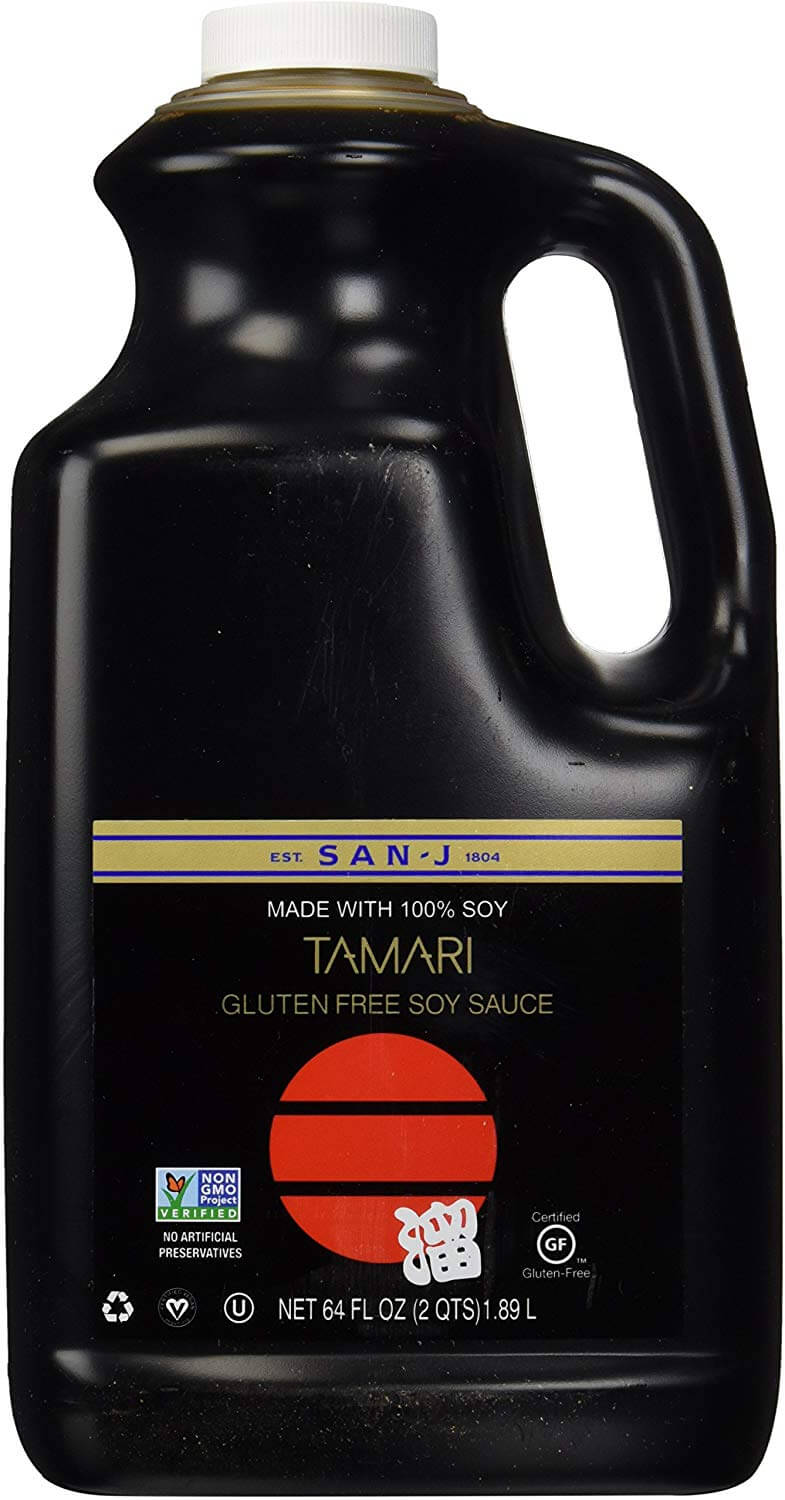
This non-GMO soy sauce is also gluten-free and is made with more soybeans than regular soy sauce. This ensures that a smooth, rich and complex product is produced.
If you eat a gluten-free diet, rest assured that the San-J Tamari Soy Sauce is made only with soybeans and no wheat.
Other ingredients include alcohol (to preserve freshness), salt and water. It is also Kosher which is great if you’re Jewish.
This sauce can be used with dishes including soups, casseroles, gravy, sauces and stir-frys to name a few. It is recommended that you use this product carefully, and if using it in a dish you can also substitute salt with this soy sauce.
This is because there is around 320mg of sodium per tablespoon of this soy sauce whereas a regular tablespoon of salt would be around 590mg of salt. Typically, soy sauce replaces table salt when used properly in dishes.
Pros
Cons
4. Best of Thailand Premium Lite Soy Sauce
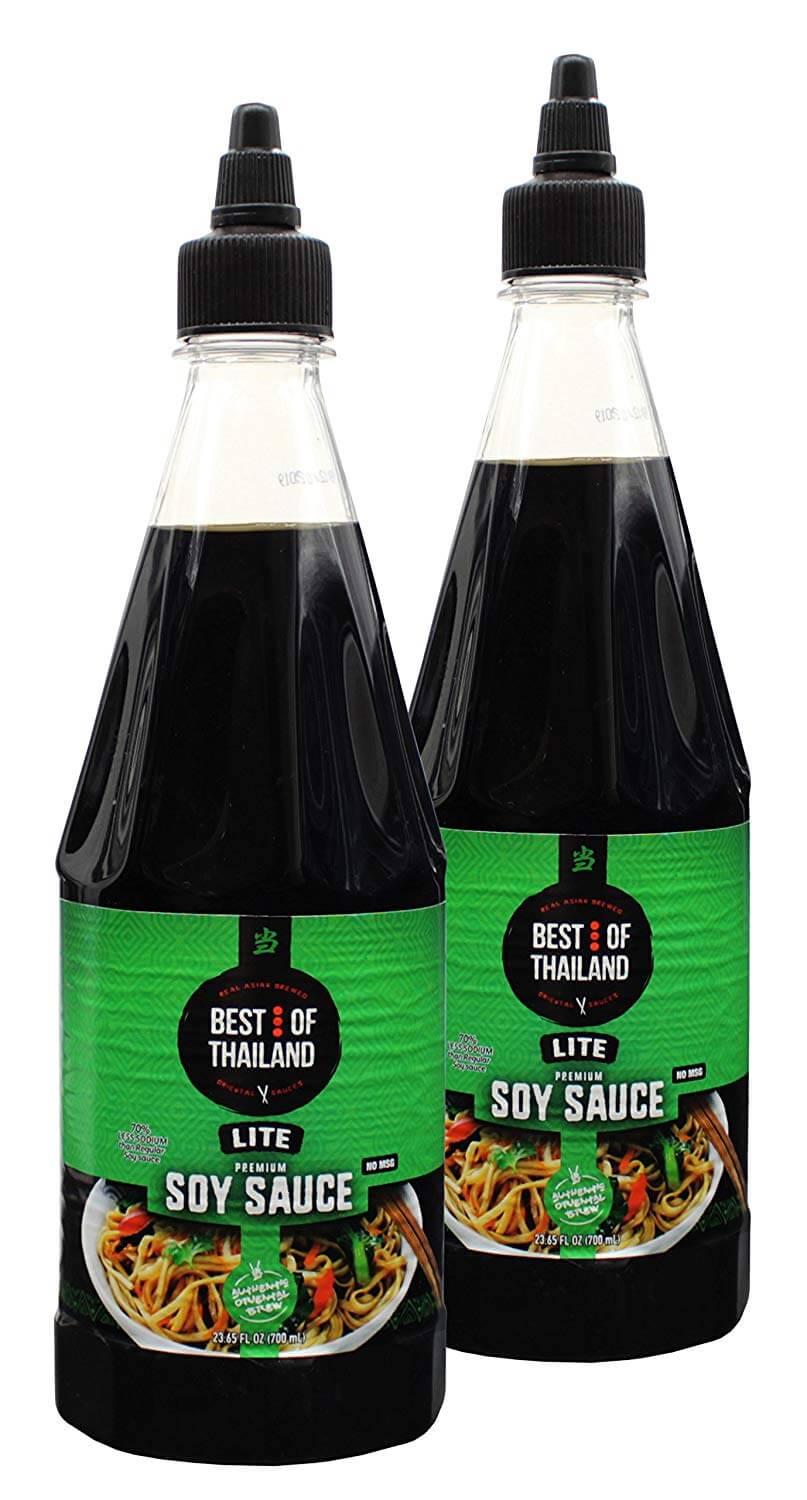
What most soy sauce has in common is its high sodium content thanks to the sauce marinating in salt. Though this makes soy sauce delicious, it also can be damaging to our health if over consumed.
Best of Thailand have a light version of soy sauce which has less sodium in it than most other brands of soy sauce.
In a tablespoon of this sauce, there is typically 270mg per serving and 13 calories. You won't have to sacrifice your taste buds for your health any longer.
This soy sauce is also MSG-free and is made from wheat, soybeans, vinegar and sugar, making it ideal to use for marinating fish. This product does include preservatives, however, and though this provides a long shelf life, it may be something to look out for.
Pros
Cons
5. Bourbon Barrel Foods - Bluegrass Soy Sauce
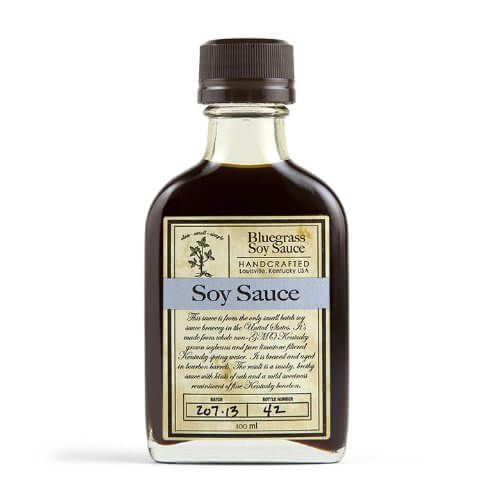
This bottle of soy sauce is microbrewed and is the only one of its type which is manufactured in the USA.
It is also handcrafted by the founder of the company and made in small batches with non-GMO soybeans which have grown in Kentucky.
Also in the ingredients list is red winter wheat and Kentucky spring water which has been filtered with limestone. This soy sauce has a brothy and slightly sweet and oaky taste.
Previous Bourbon barrels are recycled which is not only great for the environment but also gives the soy sauce a smokier flavour. The soy sauce is fermented in these barrels for a year for optimal flavour.
This sauce has also gained a lot of media coverage in recent years and was the finalist of the Sofi Awards (Speciality Food Association) and has been written about in countless newspapers and magazines.
If you’re curious about why this soy sauce was so hyped, you may want to give it a try for yourself. This soy sauce 10 calories per teaspoon and 810mg of sodium.
Pros
Cons
6. Lee Kum Kee Premium Dark Soy Sauce

Made from premium soybeans, wheat flour, salt, sugar, potassium sorbate (a preservative) and some flavour enhancers, the Lee Kum Kee soy sauce is rich in flavour without being overpowering.
Be very mindful with this product as there is 1180mg of sodium per tablespoon.
If you like some of your dishes to have a deeper and darker colour, this soy sauce is great for doing that. You may find that that sauce itself is thick. Consider diluting the sauce with water according to your needs.
Pros
Cons
7. Pearl River Bridge Superior Dark Soy Sauce - Mushroom
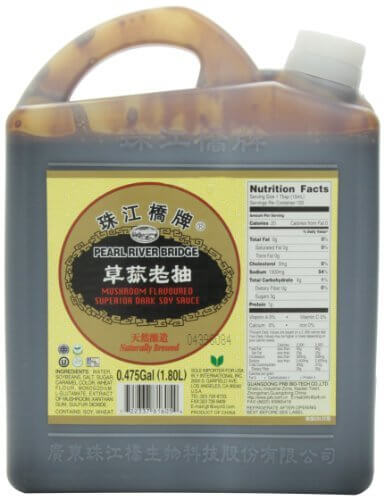
Unique to other soy sauces, the Pearl River Bridge soy sauce is made with mushroom extract. This gives the sauce a robust and powerful flavour.
This soy sauce is fermented in open-air and in the sun which aids in creating a dark colour and thickening the consistency of the sauce.
It comes in a plastic container but this can be reused and recycled.
The ingredients include soybeans, water, wheat flour, salt, mushroom extract and a little bit of sulfur dioxide. The sulfur dioxide is used as a preservative to keep this product good to use for as long as possible. Though this soy sauce is 20 calories per serving, it has also got 1300mg of sodium. Be mindful about this when you use it.
Pros
Cons
8. San-J Gluten Free Lite Tamari Soy Sauce

We've got another San-J product in this list, but this one is great for those who are super conscious about the sodium in their diet.
We understand that if you are cooking for your family, you wouldn't want to consume a large amount of salt.
Most regular soy sauces are packed with high sodium levels which could be an issue.
The San-J Lite Tamari Soy Sauce is not only gluten-free but has 50% less sodium than the regular gluten-free option. This sauce is fermented naturally for six months. It is made from water, salt, soybeans and a little bit of alcohol which is used to preserve the product. It comes with 490mg sodium and is 10 calories per serving.
Pros
Cons
9. Pearl River Bridge Golden Label Superior Light Soy Sauce

The previous Pearl River Bridge soy sauce has its perks and unique qualities.
Though this version doesn't come with mushroom extract, it is lighter and is collected from the later batches during fermentation. This offers a unique, cleaner taste.
The difference between light and dark soy sauce is only its colour. This Pearl River product is light, meaning it won't change the colour of your ingredients significantly.
This is great for dishes that include many vibrant vegetables and garnishes that you would like to show off. With 10 calories and 1090mg of sodium per serving, this soy sauce is less in both areas compared to its dark counterpart.
Pros
Cons
10. Healthy Boy Mushroom Soy Sauce
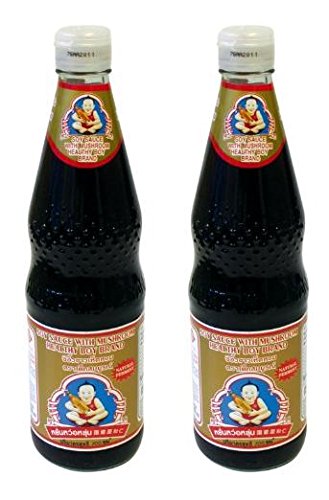
The last product in our list is the Healthy Boy Mushroom Soy Sauce which is made from water, wheat, salt, sugar, defatted soybeans mushroom extract, some preservatives and a few more ingredients.
Made in Thailand, this flavourful soy sauce is versatile and tasty. Be wary, as it has 1440mg of sodium per tablespoon.
Pros
Cons
Things to Consider Before Buying Soy Sauce

Source: marthastewart.com
Though red wine is typically known to have a bunch of antioxidants in it, there are actually more antioxidants in soy sauce, making it a guilt-free condiment you can run to regularly.
There are other benefits of soy sauce too. It contains certain minerals such as phosphorous, iron and also contains free amino acids. Phosphorus is great for maintaining strong teeth and bones, and free amino acids help to boost your mood and prevent loss of muscle.
Soy sauce was invented over 2000 years ago when foods were frequently salted to preserve them, as freezers and electricity had not been invented then. As a result, many foods would be fermented with salt over many months and along the process, soy sauce was created.
In the modern-day, soy sauce has become incredibly versatile and also comes in several variations. Most Asian cuisines heavily rely on soy sauce for added flavour, so this is something to look into if you enjoy different East Asian cuisines, and are looking to cook up your own. Here are some things to look out for so you can find the ideal soy sauce for your meals.
Sodium Levels and Calories
To begin, one of the most important aspects to consider is the sodium levels in each bottle of soy sauce.
Typically, soy sauce is used in small amounts either as a dipping sauce or to pour onto your dishes while cooking. Each serving - around a tablespoon - is normally all you would need per meal, depending on how much food you are cooking.
Because salt is a major ingredient in soy sauce, for both its flavour and to ferment the sauce, you typically won't need to add extra salt into your dish if you are using soy sauce. In fact, it is not uncommon to use soy sauce as a replacement for table salt altogether.
Despite this, it is always important to check the nutrition label on any food product to see what you are consuming to ensure you are not harming your health.
The recommended daily amount of sodium that an average adult should consume is around 2300mg. Soy sauce can easily have around half of this recommended amount in a single tablespoon and serving.
Calories are also important to consider especially if you are conscious of your weight. Soy sauce is typically low in calories and can range from 10 to 90 calories per serving.
Flavour
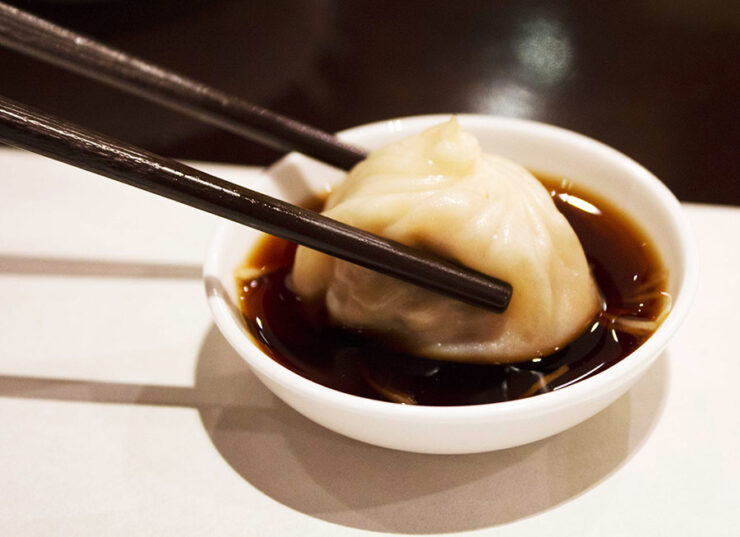
Source: drmegsie.wordpress.com
The next thing to consider is the flavour. If you don't eat soy sauce often, you may believe that most brands of soy sauce taste the same or are very similar to each other.
Though this may be the case for some soy sauces, this isn't universally true.
Varying Asian countries such as Japan and China typically produce different tasting soy sauces. Chinese soy sauce tends to be saltier and is fermented for a longer period. Japanese soy sauce is sweeter and sometimes is only fermented for only a few months rather than a year. This is known as Tamari soy sauce which is used to easily differentiate the two types of soy sauce from each other.
Japanese soy sauce is also made with roasted wheat for a unique flavour, making it typically not gluten-free but jam-packed with flavour.
Think about the kind of flavour you enjoy and whether you have any dietary requirements to make choosing a bottle of soy sauce easier for you.
Light or Dark Soy Sauce?
The main difference between light and dark soy sauce is simply its colour. Some dishes call for a rich colour that dark soy sauce could provide. If you typically make dishes they don't need extra colouring, light soy sauce may be a better fit.
There is a slight difference in flavour between the two types of soy sauce too. Light soy sauce tends to be more watery and saltier than dark soy sauce. Dark soy sauce is also thicker in texture and slightly lower in sodium. If you do not usually consume soy sauce, it may be difficult to tell the difference between the two.
Lastly, some soy sauces on the market also include mushroom extract in their ingredients list. This could add a robust and powerful flavour to your dishes that other soy sauces cannot.
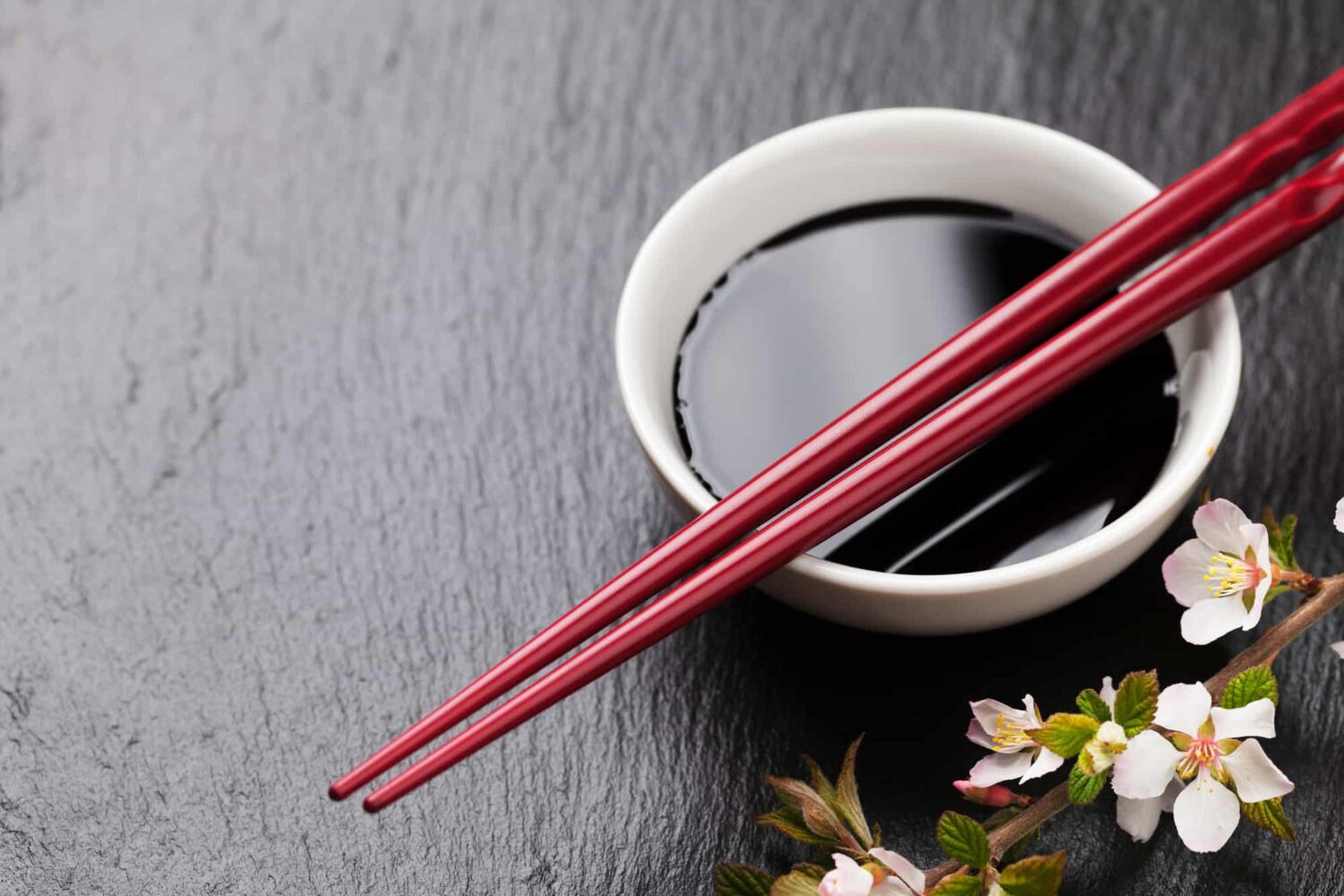
Source: foodsguy.com
Versatility
Soy sauce is great for its versatility especially in many different types of East Asian foods. It is great to add to stir-frys, savoury pancakes, rice dishes and used as a dipping sauce.
How versatile a bottle of soy sauce will be in your kitchen depends on your tastes and the flavour of the soy sauce. Be mindful of the type of dishes you will make and what kind of soy sauce suits that best in terms of flavour, colour and texture.
There isn’t a general rule of thumb when it comes to soy sauce, however. You can practically add it to any savoury meal of your choice.
Ingredients
The ingredients in a bottle of soy sauce is also another key area to consider. This is important for health, against any allergies or dietary requirements and for flavour.
If you are gluten-free, there are now several soy sauce brands which offer a gluten-free option. These soy sauces are made without wheat but still have that authentic soy sauce flavour.
Some soy sauce products are also suitable for those who follow a Kosher diet but make sure to check if this is true for the product you are interested in. Likewise, if you only eat halal foods, some soy sauce brands are suitable for you also.
Soy sauce is also suitable for both vegans and vegetarians as it does not include any animal products.
Lastly, it is crucial to consider whether a particular brand of soy sauce uses flavourings, additives or preservatives. If you are conscious about consuming these things, make sure to read the ingredients list on the bottle before purchasing.
How it's Made
The process as to how the soy sauce is made can also be an area to consider.
How long it takes to ferment the soy sauce is essential for the taste and the flavour of the sauce. The longer it is fermented, the more potent the flavour will be.
Soy sauce is usually made by soaking soybeans in water and mixing roasted wheat with it. Then, a culturing mould will be added to begin the fermentation process.
Being mindful of how your soy sauce is made will determine the quality of the product you will get, how salty or sweet it is and the texture/thickness of it.
Packaging
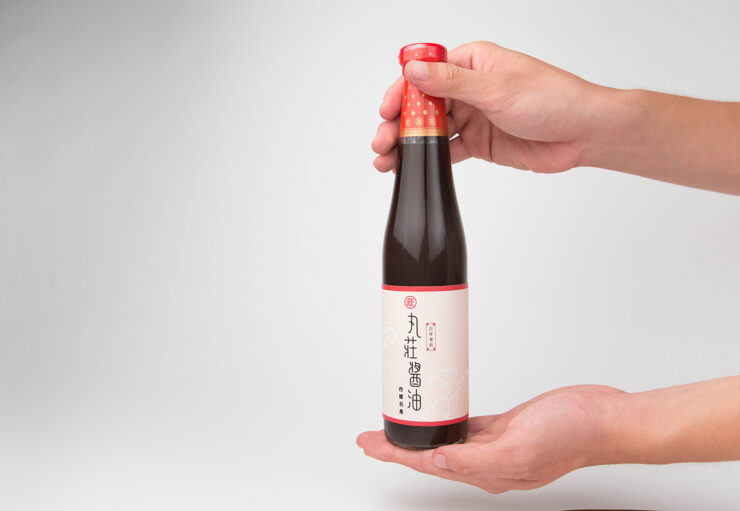
Source: behance.net
The last area to consider is the packaging. As it is becoming increasingly important to take care of our planet, you may find it important to seek out environmentally friendly products.
It is easy to find soy sauce in plastic bottles but some come in glass bottles or other reusable materials. If you care for the environment in such a way, this may be another area for you to think about before buying your bottle of soy sauce.
As a final note, be mindful of the lifespan of a bottle of soy sauce. This will depend on the preservatives added and how well you take care of the product. In its unopened state, soy sauce can typically last around three years. Store in a cool, dry place if unopened or in the fridge once opened to keep it in great condition.
Conclusion
Soy sauce can be considered to be the Eastern equivalent to table salt. It is essential for all Asian cuisines - from salads to savoury pancakes to noodles - it can be used in almost all savoury dishes.
As it is widely used in many countries such as Japan, China, Taiwan and more, it now has various variations that cater to different needs. From how salty it is, whether it has a slightly sweet kick, if it is light or dark and how thick it is, there is the perfect bottle of soy sauce for you.
We hope that through this article you have learnt a little bit more about soy sauce and feel confident to get the best soy sauce for you.
Read also: Best Teriyaki Sauces
Don't miss this soy sauces available on Amazon:
